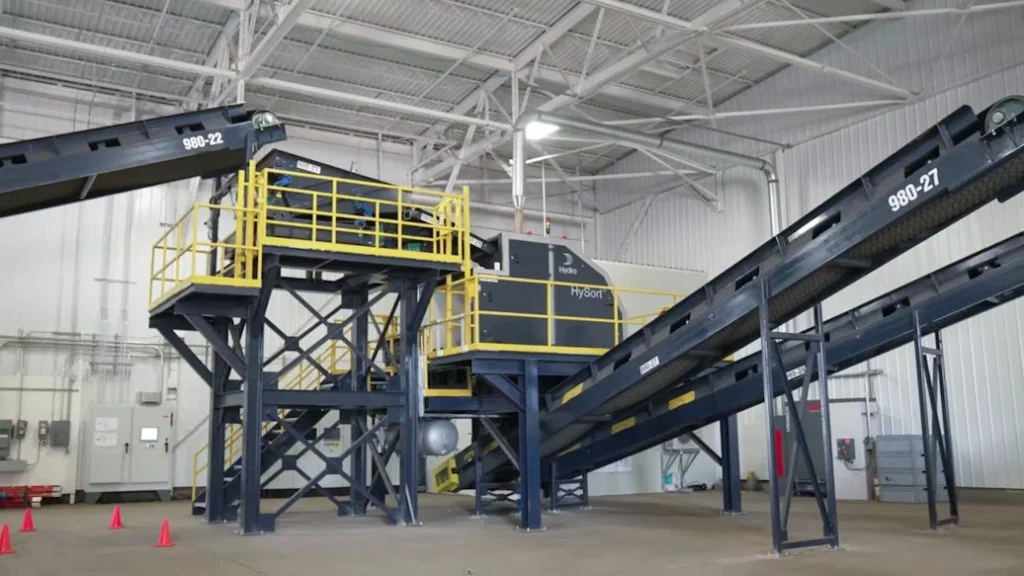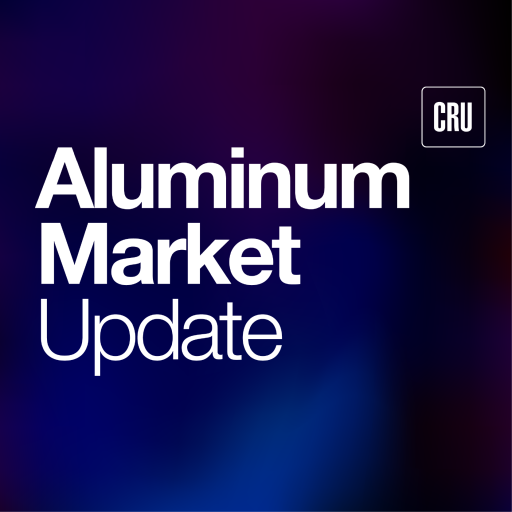Aluminum Scrap Markets

August 5, 2025
Aluminz's new plant and the recasting of Texas/Oklahoma scrap map
Written by Nicholas Bell
You may have already come across headlines over the past week about a new aluminum plant from an upstart company called Aluminz.
If you only skimmed the original press release, you’d be forgiven for thinking this was another sustainability-themed ribbon-cutting.
Dig a little deeper, and this new facility, with its zero-waste dross recovery model and rail-connected footprint, starts to look like a potential disruptor in the regional aluminum scrap and melting economy.
Aluminz disrupting dross
Aluminz is entering the market with a high-capacity dross and salt cake processing facility in Mount Pleasant, Texas. The 220,000-square-foot site is designed for a nameplate capacity of 140,000 metric tons per year (mt/y) of aluminum recycling.
Unlike conventional dross processors, Aluminz claims it will send zero salt cake to the landfill.
To understand how ambitious that is, it helps to know what they’re up against.
Traditional rotary furnaces used in secondary aluminum smelting produce a non-metallic byproduct know as salt cake, which is a combination of aluminum oxides, flux salts like sodium chloride and cryolite, and a small fraction of residual aluminum.
Aluminz’s approach bypasses this problem by using a custom-engineered rotary tilting furnace and integrated proprietary recovery systems that recover metal, flux salts, and heat all to be sold in the aftermarket. Even kiln dryers are powered by hydrogen and biogas to be resold.
The plant runs off a 7.5 megawatt solar microgrid, uses geothermal HVAC, and is rail-connected to Union Pacific and the Northeast Texas Rural Rail Transportation District (NETEX). That rail connection to NETEX will become important later in this article.
In the announcement, Aluminz explicitly mentions sourcing aluminum turnings and shavings as input for their products, a feedstock that positions it as a competitor for one of the most increasingly in-demand scrap grades in the region.
Crowded corridor
One of the most compelling aspects of this announcement is not just what Aluminz plants to do, it’s where they’re doing it. The Mount Pleasant facility sits within a rapidly evolving aluminum corridor stretching from eastern Oklahoma to northeast and central Texas.
This geography is already home to several operations, all of whom now face the possibility of competing for the same scrap streams, dross recovery business, or downstream customer base.
The most obvious incumbent that Aluminz’s entry could impact is Real Alloy’s Sapulpa, Okla., facility, just a few hours north.
Unlike Aluminz, Real Alloy’s Sapulpa site follows a more traditional model. It has long functioned as a secondary aluminum producer, handling dross and turnings via rotary and reverb furnaces. The site was acquired from Aleris roughly a decade ago, during the dissolution of Aleris’ recycling network. While Novelis later acquired much of Aleris’ finished rolled product business, Sapulpa was historically a toll processor for rolling mills in Aleris’ recycling division.
Though Real Alloy’s Indiana site – not Sapulpa – received a Department of Energy grant to help develop a zero-waste recovery process last year, if that tech is successfully piloted, it could be transferable to Sapulpa.
That said, it would likely require meaningful capital investment.
The remelt rail line
One operator that could become a natural ally is Hydro Extrusions.
Its Commerce, Tx., plant recently underwent upgrades to support its CircAL low-carbon billet line, which is certified to meet stringent environmental standards.
These certifications prioritize decarbonization and minimizing Scope 3 emissions, which is at the heart of Aluminz’s core strategy.
Hydro must source scrap that meets high traceability and emissions requirements, ideally from operations that recover more aluminum per unit of input, use renewable energy, and avoid landfilling byproducts like salt slag and dross.
The biggest hint at potential synergy is the NETEX rail line, which Aluminz has direct access to Commerce, Tx., where Hydro’s extrusion plant is located about 60 miles to the west.
While nothing formal has been announced, the compatibility and connectivity strongly position Aluminz as a potential feedstock supplier to Hydro’s plant. Whether in the form of pre-cleaned, remelted aluminum or as a partner in a close-loop recycling initiative, the groundwork is hard to miss.
The sooner stake
Meanwhile, an international player just got very local as well. Emirates Global Aluminium (EGA) recently announced plans to build a 600,000-ton primary aluminum smelter in Inola, Oklahoma, just a few hours away from both Aluminz and Real Alloy’s Sapulpa plant earlier this year.
This announcement came on the heels of EGA’s acquisition of an 80% stake in Spectro Alloys, a major secondary aluminum producer in Minnesota with low-carbon credentials. The Minnesota plant is being upgraded to expand production capacity and has a vested interest in recycling dross.
The sudden burst of regional investments places EGA, Hydro, Real Alloy, and even other secondary players like Audubon Metals into a shared ecosystem.
Neighborhood watch
Just southwest of the Aluminz site in Corsicana, Tx., Audubon Metals built a $37 million plant in 2021 to process zorba (shredded, non-ferrous automotive scrap).
The plant uses eddy currents and sorting technology to separate aluminum and cast it into ingots for shipment. With an annual capacity of a little more than 36,000 mt/y, the facility specialized in quick-cycle processing – from scrap to smelt – in under 45 days.
Though Audubon’s site is more likely to compete with other high-end twitch producers, like North Texas Shredding in the same area or Mervis Industries closer to Houston, their product portfolio includes casted ingot and they’ve had a long-established customer base before this particular facility’s construction.
Likewise, just outside the same Dallas-Fort Worth metropolitan area is Western Extrusions which, in addition to their legacy presses and anodizing equipment, added casting assets to their operation. While Western Extrusions’ focus is in extruded products and their casting capacity is not on the same scale as some secondary smelters in the country, the addition to their plant included a new dross-skimming operation.
It’s worth noting the closure of Kaiser Aluminum’s Sherman, Tx., facility in 2024 created a hole in the regional supply network, especially for scrap generation of soft alloy turnings.
These are facilities may not directly overlap with Aluminz business plan, but their capabilities in dross recycling, ingot casting, or scrap sorting position them as important regional players. It remains to be seen whether they’re potential competitors, suppliers, or customers.
The Aluminz plant is expected to be operational by early 2027. Reading between the lines, it’s clear there’s real supply chain disruption possibilities at play.
One thing is almost certain: Competition for aluminum turnings, whether 2000/7000-series turnings or high-grade turnings, is going to intensify.








